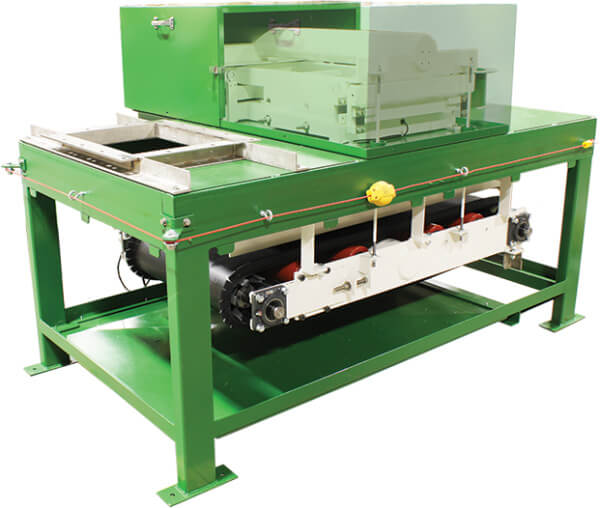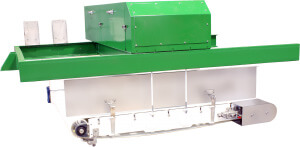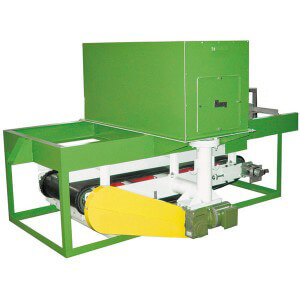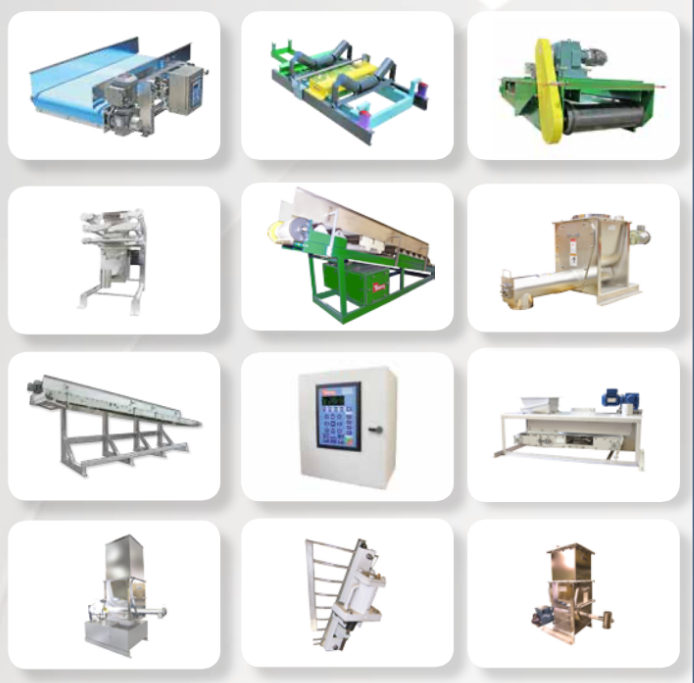Thayer Scale Model S, SB Weigher
Simplified construction and calibration results from suspending a complete synchronous-speed conveyor from a THAYER Flexure Scale. The type “S”, “SB” units adapt well to existing vibratory, screw or belt conveyor installations. It has been determined that weight measurement and/or flow control is desired. Also on new installations, the combination of a suitable pre-feeder. S, SB unit often proves the best approach considering both cost and material handling requirements. The type “S”, “SB” has been used to handle, rock wool, aluminum chips, hot rubber extrusion, glass cullet, ice, sand and petroleum coke.
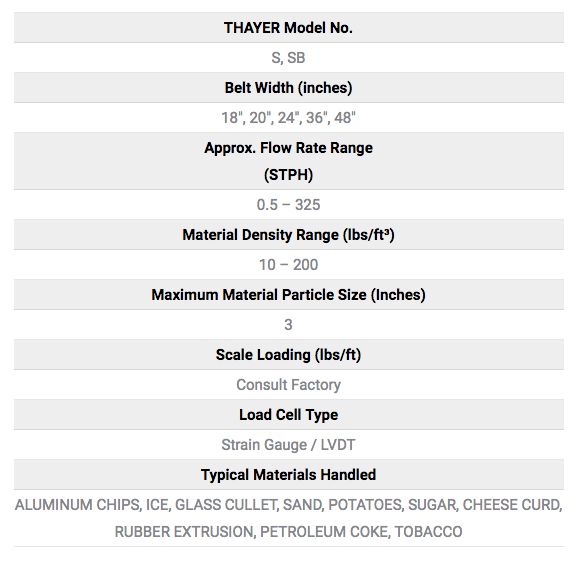
Components
The S, SB Weigher uses Thayer Scales patented precision flexure plate suspension scale with FMSS technology. The scale provides for complete mass counterbalancing of the dead load of the conveyor permitting the load sensor to react only to the net material load. This unique system is not affected by dirt, shocks or vibration, and can withstand overloads in access of 1,000 pounds without causing damage or affecting calibration. The highly advanced and extremely robust sensing technology is based on the marriage of the LVDT, embedded temperature sensing and properly linerizing and temperature compensation algorithms. The scale is mounted above or below the conveyor. This design eliminates belt effects and permits immediate scale response when the flow rate varies.
Scale
The S Weigher uses Thayer Scale’s patented Model 18 precision flexure plate suspension scale with FMSS technology. The scale provides for complete mass counterbalancing of the dead load of the conveyor, permitting the load sensor to react only to the net material load. This unique system is not affected by dirt, shocks or vibration, and can withstand overloads in excess of 1,000 pounds without causing damage or affecting calibration.
The Basic THAYER Flexure-Plate Suspension system utilizes a series of steel flexure plates to transmit gravimetric loads vertically from the load receiving element through levers to the specifically selected controls. The combination of mass counterbalancing against tare loads, frictionless flexure-mounted levers and a high resolution transducer produces a force measuring system beyond compare. Of significance is the fact that infinite weighments may be made without maintenance or calibration, regardless of atmospheric or factory conditions. In many instances, THAYER Flexure Plate Suspension Systems placed in operation in 1950 are still working without maintenance or adjustment. Two scale designs are available, either LVDT or Strain Gauge.
Conveyor
Conveyor is heavy-duty construction, employing standard industrial idlers and pulleys. Conveyor belting is endless and is normally furnished with a molded edge flange. Side skirts are also supplied to eliminate side spillage. Since load measurements are not affected by the physical characteristics of the belting and its supporting means (stiffness, sliding friction, non-uniformity, splice effects tension/misalignment interaction, etc.) the construction of the belting and its material can be chosen on the basis of durability and belt-tracking ability without concern for accuracy compromise. The unique cantilevered conveyor support makes it possible to replace belting without dismantling the conveyor.
Pre-Feeder
Depending on material being handled, pre-feeder can be screw, rotary, belt, vibratory or pinch valve. Screw, rotary or pinch valve pre-feeders are normally used with fluid powders, while belt and vibratory pre-feeders are used with granular or fibrous materials.
Controls
The Series “S”, “SB” can be supplied with Thayer instrumentation and controls to function as either a process stream weigher only, or as a flow stream controller/weigher (providing the additional controller output to regulate the upstream delivery system. Thayer’s patented “SLC” (scale location compensation) features can also be supplied to move the point of measurement further downstream adjacent to associated or “slaved” equipment.
Construction
Carbon or stainless steel, open or enclosed feeders. On enclosed feeders, all functional components are located outside of enclosure (scale, drive motor and sprockets).
